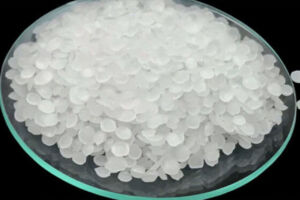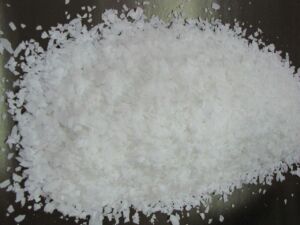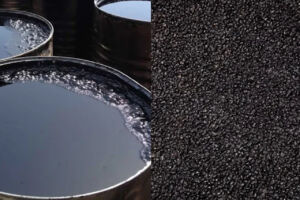IRAN’S PETROCHEMICAL INDUSTRY
Iran’s petrochemical industry was formed in 1963 with the establishment of Marodasht Chemical Fertilizer Complex in Shiraz. After that, PVC industry and then Abadan Petrochemical was launched as the first producer of polymer products.
The petrochemical industry is one of the prominent industries in the past few decades, the special attention of countries to this industry has led to its prosperity and expansion in the world, and currently this industry is considered the third largest industry in the world after the food and automobile industries. As the world’s fourth largest oil producer and having the world’s second largest gas reserves, Iran provides 80% of its export revenues from oil and gas and hopes to capture 14% of the global petrochemical market by the end of this decade. Increase the production of petrochemical products to 23 million tons per year.
PETROCHEMICAL INDUSTRY ACTIVITY IN 5 DECADES
During the 5 decades of activity of this industry in the country, a small number of its units were built in the years before the Islamic Revolution and the majority of them were built after the end of the war and during the 5-year development plans. The initial expansion phase of the National Petrochemical Industries Company, which included the development of the industry, was carried out in the form of three construction programs in the years 1963 to 1986, the result of which was the supply of domestic needs for chemical fertilizers and petrochemical and chemical base materials, and the construction of numerous petrochemical complexes, including Bandar Imam, which it became known as Iran-Japan, Farabi (Nippon Iran), Khark, Pazargad, Ahvaz Carbon (Iran), Razi (Shahpur) and Shiraz petrochemical development projects. The process of growth and development of this industry in recent years is being done slowly due to the emergence of issues such as sanctions and, as a result, the challenges of providing technology and financial resources.
The intensification of sanctions since the middle of the 2001 and the internal challenges of the petrochemical industry, such as the way of privatization and the price of feed, and issues of this kind, made the development of this industry face serious bumps. Nevertheless, the unique advantages of the development of the petrochemical industry in Iran, which can be summed up in the access to sufficient feed, water resources and suitable export sources, have made Iran’s petrochemicals still hold the second place in the region and prevent the sale of raw materials in the country plays an important role.
Petrochemical industry is a part of chemical industry that produces chemical products from oil or natural gas. Of course, some chemical compounds made from oil and gas are also obtained from other fossil fuels such as coal or renewable resources such as corn, palm fruit or sugarcane.
As mentioned, the country’s petrochemical industry was founded in Iran in 1963 with the establishment of Marodasht Petrochemical, and at first it started as a subsidiary of the Ministry of Industry, but gradually and due to the dependence of the petrochemical industry on food with the establishment of the National Petrochemical Industries Company as a subsidiary of the Oil Company, the management of the petrochemical industry was transferred to the Ministry of Oil, and according to the available documents, the National Petrochemical Industries Company was established on December 30, 1964, and on December 30 of this year, it is 50 years since the establishment of this company. And considering the importance of this industry in the whole country, its important role in the development of various regions of the country, creating employment and foreign exchange earnings, and especially considering that the petrochemical industry is practically a symbol of Iran’s industrial development after the revolution, one day in the history of our country was recorded as the National Petrochemical Industry Day.
Currently, the production capacity of petrochemical complexes in the country is about 60 million tons, the major part of this capacity includes petrochemical products and the other part includes refining by-products such as propane and butane, light and heavy hydrocarbon cuts and non-hydrocarbon materials such as sulfur.
According to the performance of the first 9 months of the year, the production of the country’s petrochemical industry is estimated at 42 million tons with an average production efficiency of 70%. The main reason for this low yield is the lack of feed needed by the complexes.
At the height of the sanctions, Iran’s petrochemical industry earned more than 54 billion dollars for the country, and on average, 80% of the export income of this industry has returned to the country’s economic cycle through the NIMA system.
The development of the petrochemical industry is one of the most important examples of preventing crude sales. The importance of converting oil and gas into various products is one of the issues that has always been emphasized in the past decades.
Of course, this point should not be ignored that encouraging the development of converting oil and gas into various products, including petrochemicals, does not necessarily mean a complete stop of crude sales. Both oil export and gas export have always been among the strategic economic-diplomatic levers in the world, and the countries that have a strong presence in the global oil or gas markets have always used this lever to their advantage. Moreover, Russia in the field of gas export and Saudi Arabia in the field of oil export are well aware of the importance of this issue.
THE ROLE OF THE PETROCHEMICAL INDUSTRY IN PRODUCTION AND JOB CREATION
Due to the fact that the petrochemical industry has the sixth position among the 71 economic sectors of Iran, this industry has a prominent role in the economy, production and employment. Also, due to the export of the major part of these products, the petrochemical industry also plays a valuable role in the development of currency and the prosperity of the banking system.
In addition, other industries such as insurance, transportation, complementary industries, etc. are also influenced by the petrochemical industry and feed off of it. As a result, the petrochemical industry can also involve the service sector and other sectors of the economy and cause their growth and development.
THE IMPACT OF PRODUCTION AND EXPORT OF PETROCHEMICAL PRODUCTS ON THE ECONOMY
Since Iran’s economy is based on the export of oil and gas and this issue may lead to the vulnerability of the economy, increasing the export of petrochemical products will play a significant role in preventing this vulnerability. In addition, the raw materials of many sectors of the economy are products produced in the petrochemical industry, as a result, the production and export of these materials has always been important and has a special position.
By injecting petrochemical revenues into banks, it becomes possible to pay loans to people and producers, so banks have also entered this field and invested in the petrochemical industry. Some ministries, such as the Ministry of Labor, Cooperative and Social Welfare, have established several companies and factories in the field of petrochemical products.
The dependence of different industries on petrochemicals shows the wide and important position of this industry in Iran’s economy after oil.
By supplying raw materials and inputs to various economic sectors and having minimal dependence on other sectors of the country’s economy, the petrochemical industry has increased the annual growth of added value and increased the amount of oil exports, all of which ultimately lead to the realization of the goals of the country’s development plans. Therefore, in addition to the development and production of downstream products in this industry, investments in this sector should be increased.
The effects of eliminating the production of petrochemical products on the country’s economy
According to the studies conducted at the Majlis Research Center, the income of the country’s economy will decrease by 3.88% if the production of petrochemical products is eliminated.
Raw materials include sectors such as coke production, vehicle repair, production of goods such as rubber and plastic, cleaners, medicine, paint, refined products, electric services, road transportation, nuclear fuels, agricultural sectors, construction and motor vehicle production. They form petrochemical products and if the production of petrochemical products is removed, these industries will face serious losses.
Arabia; Iran’s regional rival
Majlis Research Center predicted during a survey that Saudi Arabia could have a better position in the field of petrochemicals than other countries in the region in the future due to the positive actions it has taken in its petrochemical industry. Saudi petrochemical industry is one of the important regional competitors of Iranian petrochemical industry. According to that center, one of the reasons for the success of the Saudi petrochemical industry is the existence of 5-year plans for industrial development in this country and raising the share of the private sector in the GDP up to 70% and the creation of the industrial cities of Jubeil and Yanba, which are among the achievements of this five-year plans.
Saudi Aramco, Jubeil, Yanba, and SABIC are among the important companies in the petrochemical industry of this country. For example, the industrial city of Jubeil in this country has 160 industrial companies and more than 70 thousand full-time residents. This company alone accounts for more than 7% of Saudi Arabia’s GDP. Also, SABIC, as one of the most important industries in Saudi petrochemicals, was ranked fourth among the world’s chemical companies in 2016.
Among the world’s oil companies, Aramco has the highest production volume and the highest amount of oil reserves. In 2016, Aramco produced an average of 10.5 million barrels of oil per day. But one of the characteristics of the Saudi petrochemical industry is the presence of good incentives for domestic and foreign investors in this industry, and the entry process of various companies to invest in the petrochemical industry of this country has been facilitated. Among them, important companies such as Chevron Phillips, Dow and Sumitomo are present in the petrochemical industry of this country.
Paying attention to the petrochemical industry is one of the plans of the Saudis, and they plan to increase the share of this industry from 16% in 2015 to 50% in 2030. In Saudi Arabia, a special organization called the Public Investment Authority of Saudi Arabia has been established to provide investors. Foreigners are guaranteed to register and start their business up to 30 days after submitting the application. Chemical and plastic exports in 2016 accounted for about 60% of the country’s non-oil exports. Currently, Saudi Arabia plans to become one of the main players in the global petrochemical market in the next few years with plans to increase domestic and foreign production and expand its exports. The implementation of these programs is aligned with the upward vision of the country 2030, which is a government plan to reduce Saudi Arabia’s dependence on oil, diversify its economy and develop public service sectors.
The main goal of this plan is to create conditions for the development of the Saudi petrochemical industry and increase its competitiveness in the international arena. These goals will be achieved through a significant increase in the export of Saudi petrochemical products to foreign markets. At the end of 2018, the Saudis have put more than 2 billion dollars of new investment in their petrochemical industry, which includes a polyacrylamide factory. And there has been an ammonia project in the Al-Jubeil region. This investment was made with the cooperation of 5 foreign companies, namely Germany’s BASF, Royal Dutch Shell, Japan’s Mitsui, France’s SNF and the Dutch advanced metallurgy group AMG.
Some petrochemical products of the country
OLEFIN AND POLYMER BASED PRODUCTS
Olefins include two-carbon compounds (such as ethylene), three-carbon compounds (such as propylene) and four-carbon compounds (such as butadiene and butylene). Light olefins account for more than 60% of petrochemical production in the whole world. Ethylene is the most widely used basic material of the petrochemical industry in the world. This hydrocarbon, which has a ratio of hydrogen atoms to carbon two, is considered as the lightest olefin.
The main feed of the olefin unit is light and heavy naphtha, which is supplied from the refinery through transmission lines or naphtha tankers.
PE
Polyethylene is the most widely used polymer in the world from the category of thermoplastics and belongs to the family of polyolefins and represents the largest group of plastic waste. This polymer is widely used in the packaging industry, for example, bags and containers. Milk bottles. Plastic spoons in the kitchen can be mentioned. This polymer is produced through radical polymerization of ethylene.
POLYPROPYLENE PP
Polypropylene is the second most widely used thermoplastic from the polyolefin family. Compared to polyethylene, it has lower impact strength, but higher usage temperature and higher tensile strength. Polypropylene is one of the polymers with diverse efficiency, which is used in the production of various plastic parts in the automotive industry (interior decorations, propellers) and also in the fiber industry (artificial grass, anti-rot rope).
AROMATICS
Paraxylene, orthoxylene, benzene and toluene are products of the aromatic unit. Paraxylin product is used in the production of synthetic fibers, resins, polyesters and polyacrylics. Benzene product is used in the production of styrene, raw materials for detergents, softeners, insecticides and paints. Orthosilin product is used to make softeners, pesticides and paints.
BENZENE
Benzene is the lightest aromatic. Its most important application is in the production of styrene, raw materials for tires, and in the production of LAB and raw materials for detergents.
PARAXYLIN AND ORTHOXYLIN
Xylenes are on the second rank of production and consumption of aromatics after benzene. 82% of produced xylenes are converted to paraxylin, 6% to orthoxylin, 1% to metaxylin, and the remaining 11% to other compounds.
TOLUENE
One of the main uses of this substance is to use it as a solvent in various industries, including paint and resin.
Important companies active in the production of olefins, polymers and aromatics include Maron Petrochemical, Pars, Aria, Nouri, Jam, Amirkabir, Tendgoyan, Shazand, Booali Sina, Polypropylene Jam, Ghadir, Qaid Basir Petrochemical, Abadan Petrochemical, Isfahan Petrochemical, Petrochemical Industries Persepolis.












